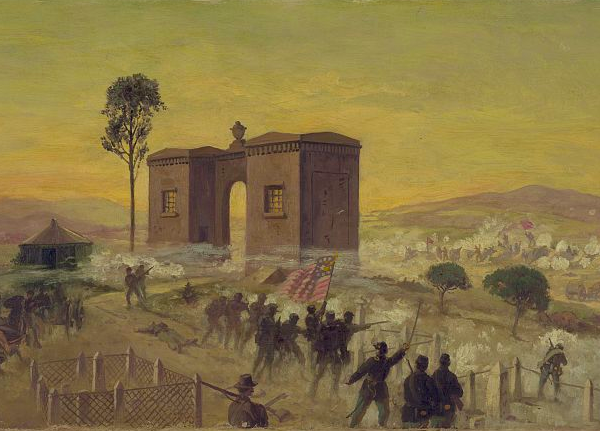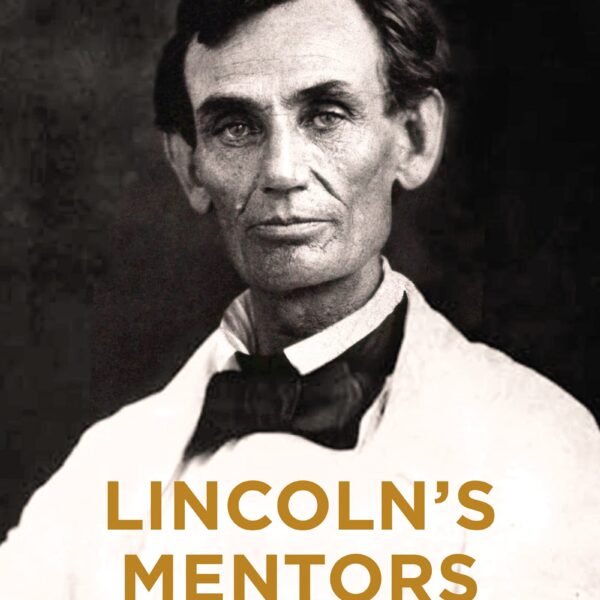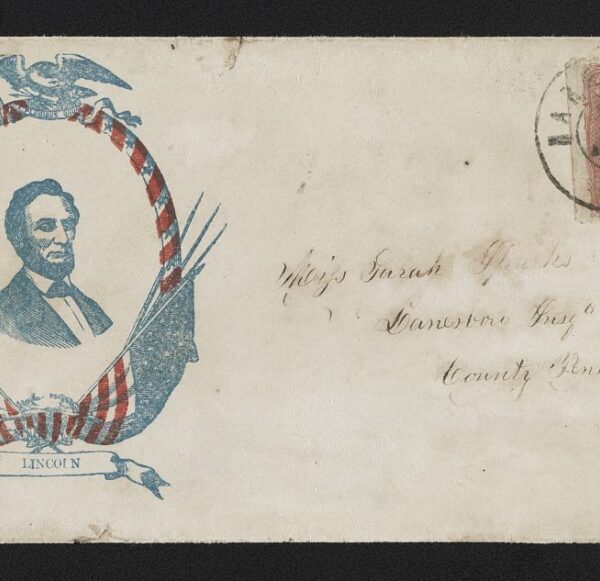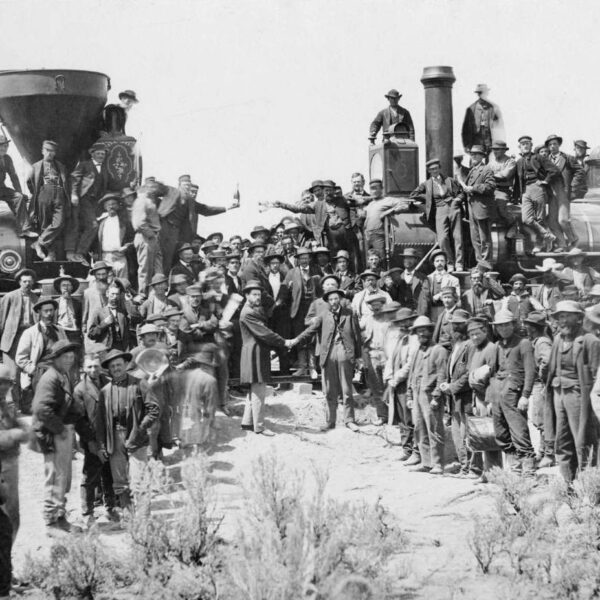During the Civil War, the prominent lithography firm Currier and Ives produced inexpensive prints of the conflict and its participants based on original drawings by some of the country’s leading artists. Among the company’s leading subjects was Abraham Lincoln, who Currier and Ives covered from his time as the Republican candidate for the presidency in 1860 through his death by assassination in 1865. What follows is a small but representative sample of their work on “Honest Abe.” (All images courtesy of the Library of Congress.)
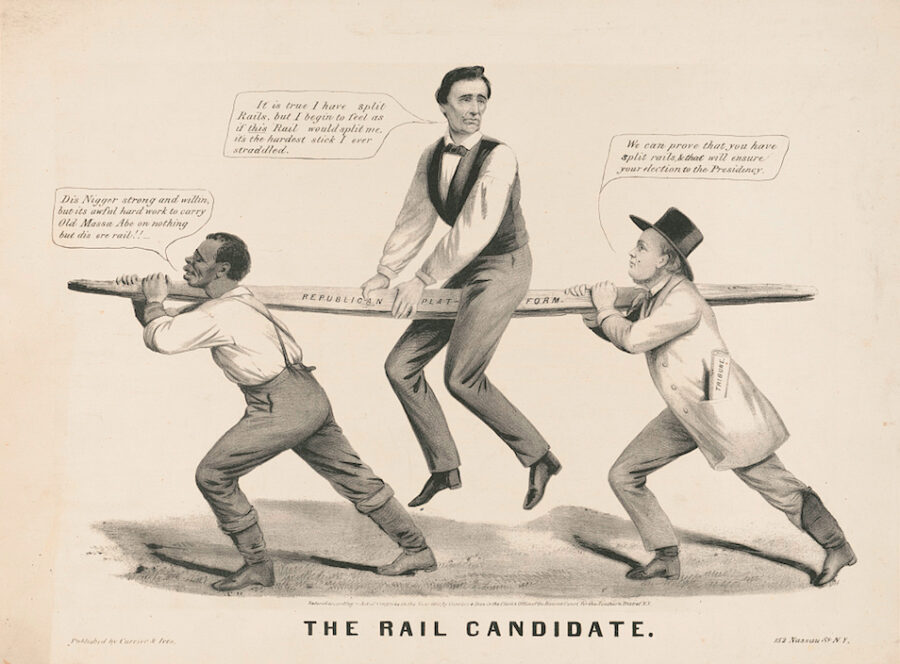
“The Rail Candidate,” a Currier and Ives print produced in 1860, shows Republican presidential nominee Abraham Lincoln straddling a rail—representing the party’s antislavery platform—carried by an African-American man and the New-York Tribune’s abolitionist editor Horace Greeley. An uncomfortable Lincoln says, “It is true I have split Rails, but I begin to feel as if ‘this’ rail would split me, it’s the hardest stick I ever straddled.”
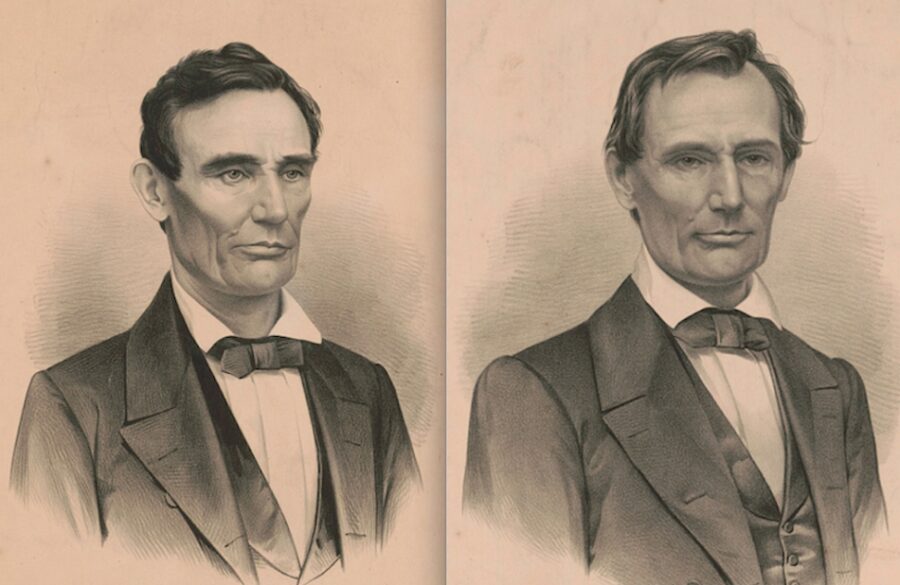
Currier and Ives featured many more complimentary views of candidate Lincoln in 1860. Shown here are two profiles of the man the lithographers both titled “Our Next President.”
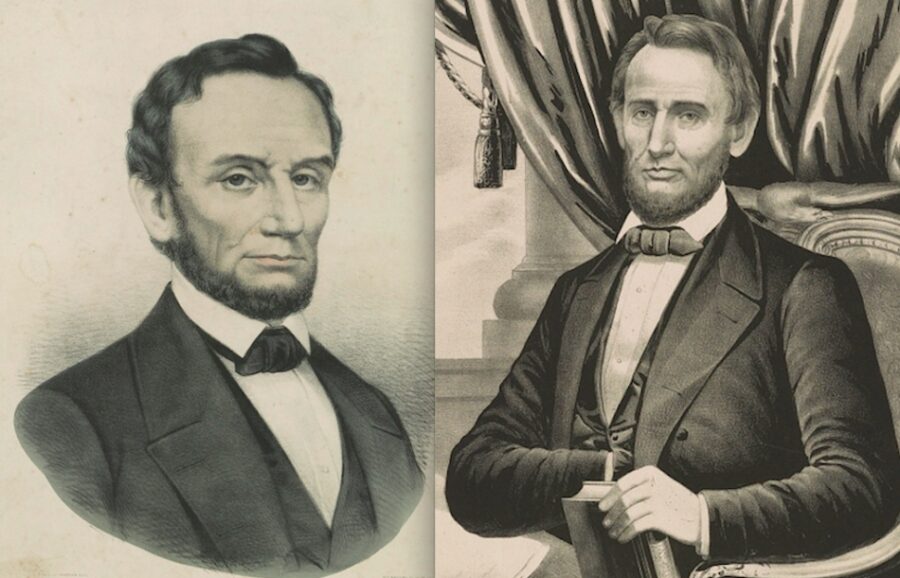
After Lincoln was elected in November 1860, Currier and Ives issued a number of updated profiles—including the two shown here—of the new president to include the beard he had started growing shortly before the election.
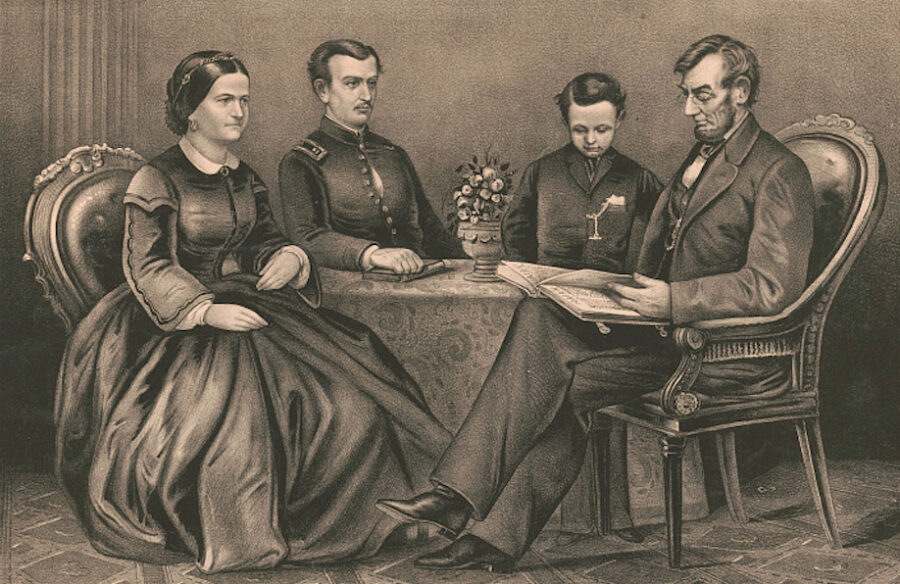
“The Lincoln Family,” a print from 1867, shows the Lincolns—left to right, Mary, Robert, Theodore (“Tad”), and Abraham—as they appeared during the war. Absent is William (“Willie”), the Lincolns’ 11-year-old son who died of typhoid fever in 1862.

Currier and Ives produced a variety of prints relating to the presidential campaign in 1864. Shown here is a banner produced for Lincoln and running mate Andrew Johnson. Above their portraits is a “Temple of Liberty” with an eagle perched atop it. At the bottom is a scene of a farmer plowing his fields, flanked on both sides by cornucopias spilling over with fruit, a representation of the promise of peace and prosperity that would accompany Lincoln’s reelection.
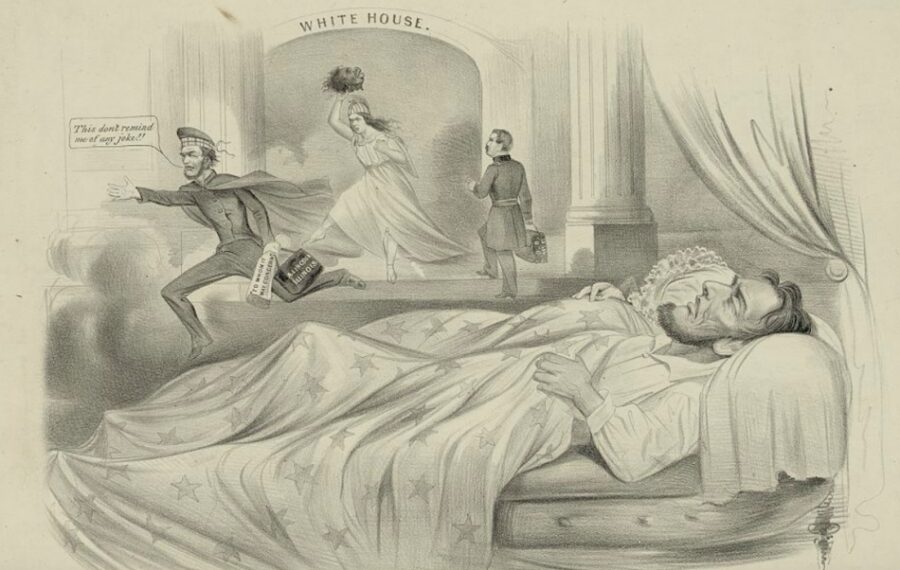
This print, also produced in the run-up to the 1864 election, plays off of Lincoln’s belief in the prophetic importance of dreams. In it, a sleeping Lincoln is tormented by a nightmare of his defeat at the polls. A woman—representing either Columbia or Liberty—stands at the door of the White House waving the severed head of a black man. Lincoln, dressed in a Scottish cap—runs away as George B. McClellan, his Democratic opponent, walks up the White House steps. In the end, Lincoln would defeat McClellan handily, receiving 55 to his opponent’s 45 percent of the popular vote.
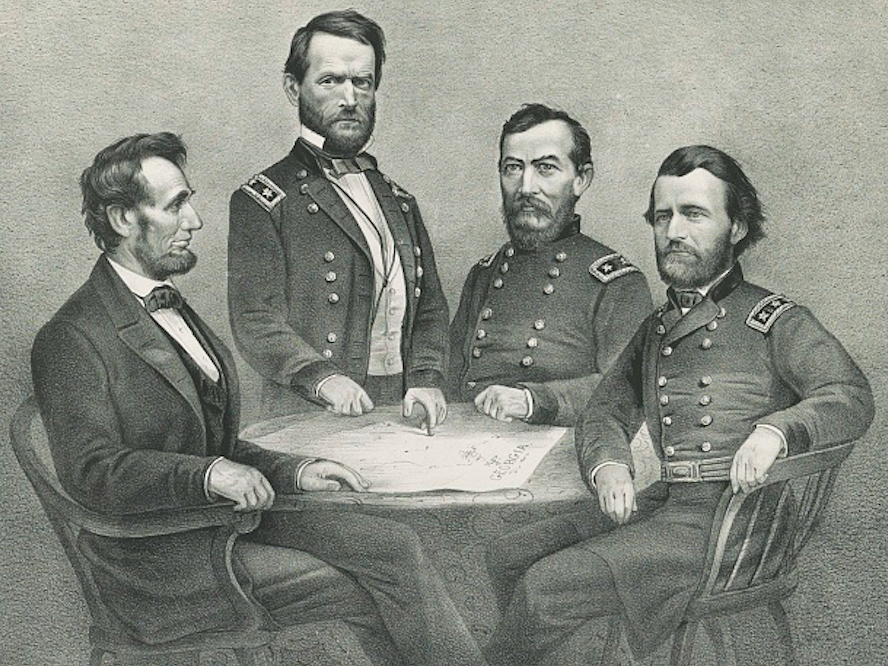
This 1865 print shows Lincoln (far left) during a visit to General Ulysses S. Grant’s headquarters at City Point, Virginia, in March—a month before war’s end. With Lincoln and Grant (far right) are Union generals William T. Sherman (left) and Philip Sheridan.
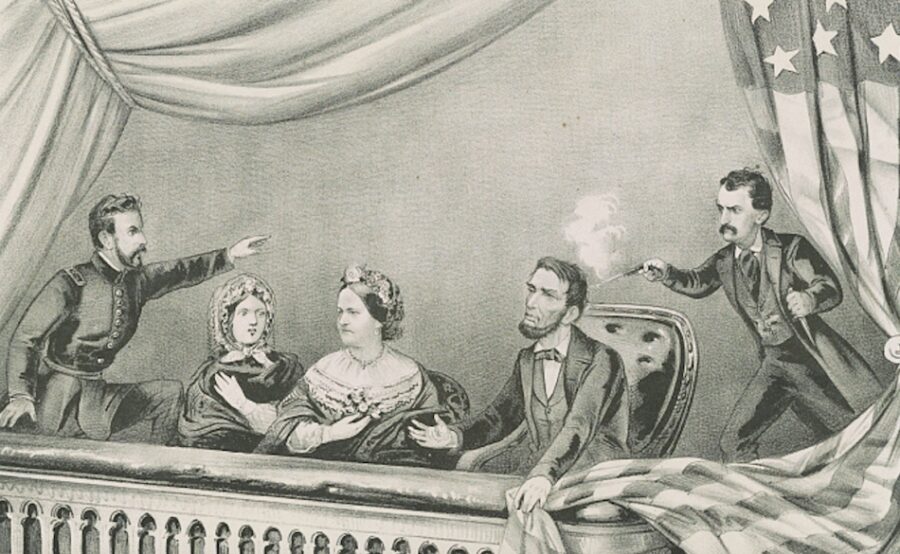
Currier and Ives produced this print of Lincoln’s assassination by John Wilkes Booth at Ford’s Theatre shortly after the event. Sitting beside Mrs. Lincoln are Major Henry Rathbone and his fiancée Clara Harris, daughter of New York Senator Ira Harris, who had accepted the Lincolns’ invitation to attend a showing of the comedic play “Our American Cousin” on the night of April 14, 1865.
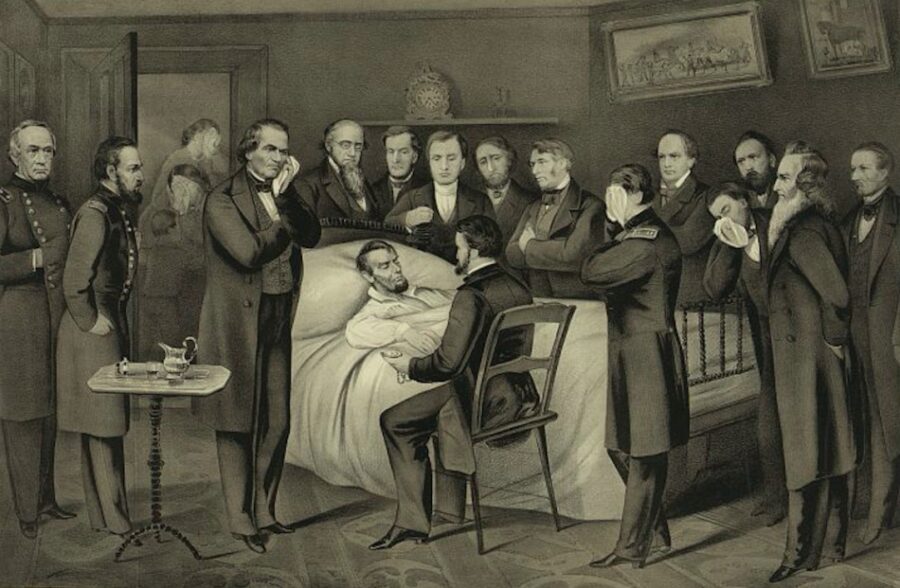
“The Death Bed of the Martyr President Abraham Lincoln” depicts the scene around Lincoln’s deathbed, where he would pass away during the morning of March 15. Surrounding him are a number of prominent people, including General Henry Halleck, Vice President Andrew Johnson, Secretary of War Edwin Stanton, Captain Robert Lincoln, and Navy Secretary Gideon Welles.
